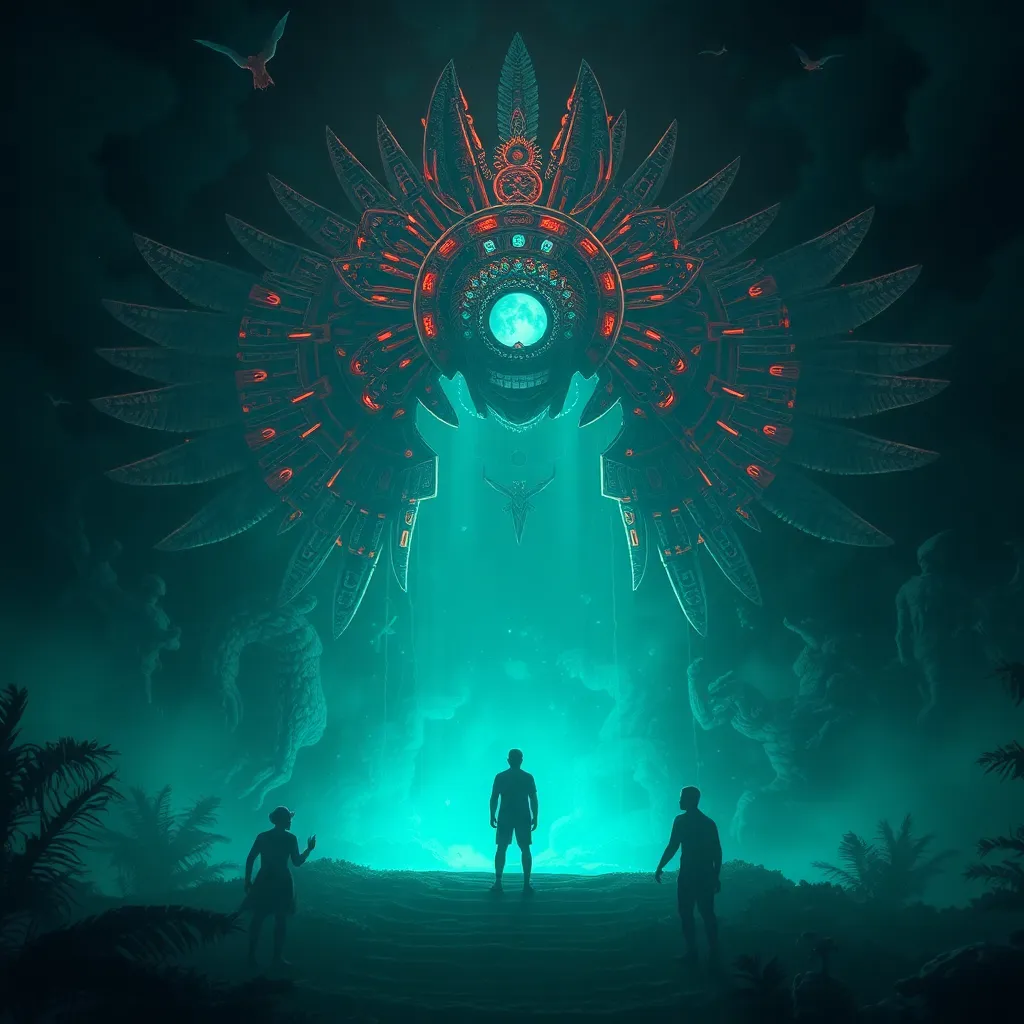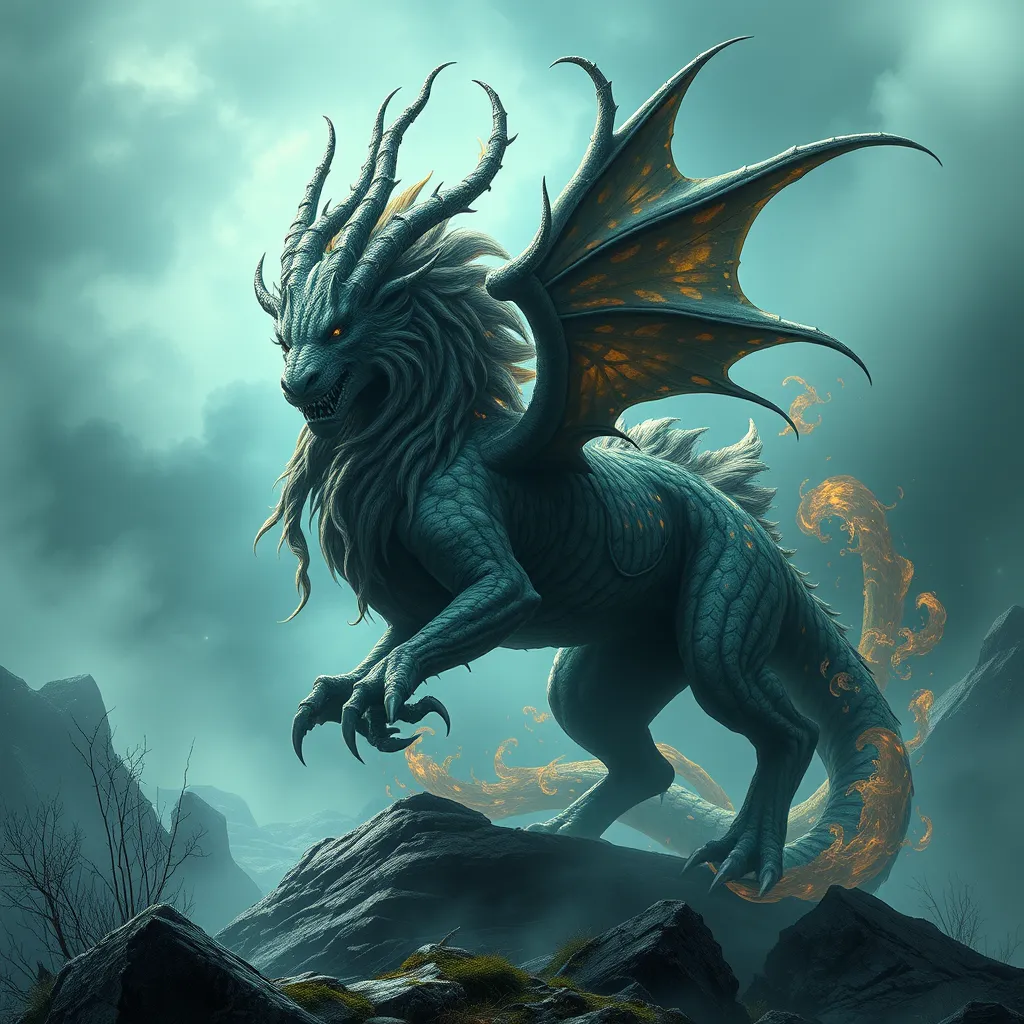The Ahuizotl: A Journey into the Heart of Aztec Folklore
I. Introduction to Aztec Mythology
Aztec mythology is a rich tapestry of beliefs, stories, and traditions that shaped the worldviews of the Aztec civilization. The Aztecs, who thrived in central Mexico from the 14th to the 16th century, had a complex pantheon of gods and goddesses, each representing various aspects of life, nature, and the cosmos.
Folklore played a crucial role in understanding the Aztec worldview, as it provided moral lessons, explanations for natural phenomena, and a means to connect with the spiritual realm. Among the myriad figures in this mythology, the Ahuizotl stands out as a captivating and multifaceted creature.
The Ahuizotl is often depicted as a water-dwelling beast with distinctive features that evoke both fear and fascination. This article delves into the origins, characteristics, and cultural significance of the Ahuizotl, exploring its impact on both ancient and contemporary narratives.
II. The Origins of the Ahuizotl
The origins of the Ahuizotl can be traced back to pre-Columbian texts and oral traditions that highlight its significance in Aztec culture. Historical references to the creature are found in various codices, illustrating the deep-rooted beliefs surrounding this enigmatic being.
The name “Ahuizotl” can be linguistically broken down into components: “atl,” meaning water, and “huizotl,” which refers to a creature or animal. This suggests that the Ahuizotl is fundamentally associated with water, reinforcing the idea of aquatic creatures holding a pivotal role in Aztec mythology.
In Aztec myths, aquatic beings often symbolize the duality of creation and destruction, reflecting the complex relationship the Aztecs had with water—essential for life yet potentially dangerous.
III. Physical Description and Characteristics
The Ahuizotl is commonly described as a creature resembling a dog or a large feline, with fur that is sleek and dark. It is said to possess a long, flexible tail that ends in a hand-like appendage, which it uses to lure unsuspecting victims into the water.
Unique features of the Ahuizotl include:
- A long, agile tail that resembles a human hand, used for grabbing and pulling.
- Large, expressive eyes that are said to glimmer in the dark, evoking a sense of otherworldliness.
- A body that is often depicted as waterlogged and slick, making it difficult to capture.
The symbolism of these physical traits is profound in Aztec culture. The hand represents both the allure of temptation and the dangers lurking beneath the surface, while the eyes symbolize the watchful nature of the Ahuizotl, ever-vigilant over its aquatic domain.
IV. The Ahuizotl in Aztec Lore
The Ahuizotl features prominently in various tales and legends that emphasize its connection to water and nature. One popular story recounts how the creature would lure fishermen and travelers near lakes or rivers with its enchanting cries, only to drag them under the water when they approached.
In these stories, the Ahuizotl often serves as a guardian of water bodies, embodying the balance between life and death in the natural world. It is frequently associated with other mythological creatures, such as the Nahual, a shapeshifting spirit, and the water god Tlaloc.
The connections to these figures highlight the Ahuizotl’s role in the broader context of Aztec mythology, emphasizing themes of transformation, mystery, and the power of nature.
V. The Ahuizotl’s Habitat and Behavior
Geographically, the Ahuizotl is often associated with lakes, rivers, and other bodies of water across central Mexico. Sightings and stories abound, particularly in regions where water is plentiful, reflecting the creature’s strong ties to aquatic environments.
Behaviorally, the Ahuizotl is depicted as a cunning and intelligent predator. Its hunting methods are characterized by:
- Using its tail to mimic the sounds of a crying child or a wounded animal, drawing in unsuspecting victims.
- Ambushing prey from beneath the water, showcasing its stealth and adaptability.
As a guardian of water bodies, the Ahuizotl embodies the Aztec belief in the sacredness of water and its essential role in life, serving as a reminder to respect nature’s power.
VI. The Symbolism of the Ahuizotl
The Ahuizotl carries significant symbolic weight in Aztec culture. It is often interpreted as a symbol of danger, particularly the perilous nature of water. The creature’s ability to lure victims reflects the temptations and risks that accompany life’s journeys.
Moreover, the Ahuizotl represents the unknown and the supernatural, embodying fears of what lies beneath the surface of the water. This connection to the unseen forces of nature contributes to its status as a cautionary figure in folklore.
In many tales, the Ahuizotl serves as a moral lesson about the consequences of hubris and the importance of heeding warnings, reinforcing the idea that respect for nature is paramount.
VII. The Ahuizotl in Contemporary Culture
The influence of the Ahuizotl extends into modern literature and media, where it continues to captivate audiences. Various authors and filmmakers have drawn inspiration from this mythological creature, incorporating its traits into their narratives.
In popular culture, the Ahuizotl has appeared in:
- Fantasy novels, often depicted as a guardian or antagonist associated with water.
- Video games, where it serves as a formidable creature or boss character.
- Art and illustrations, capturing its eerie beauty and enigmatic nature.
The preservation of Aztec folklore, including the Ahuizotl, is vital for contemporary society, as it fosters a deeper understanding of cultural heritage and the stories that have shaped human experience over millennia.
VIII. Conclusion: The Legacy of the Ahuizotl
The Ahuizotl holds a significant place in Aztec heritage, representing the complex relationship between humanity and the natural world. Its stories serve as reminders of the dangers and mysteries inherent in nature, emphasizing the importance of respect and reverence.
Preserving folklore like that of the Ahuizotl is crucial for future generations, allowing them to connect with their cultural roots and understand the values and beliefs of those who came before them.
Ultimately, the enduring impact of the Ahuizotl in cultural memory speaks to the timeless nature of myths and legends, illustrating how they continue to resonate in a world that often overlooks the lessons they impart.



